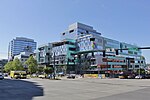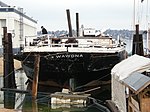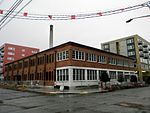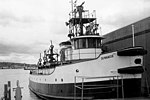Cascade, Seattle

Cascade is an urban neighborhood abutting Downtown Seattle, Washington, United States, located adjacent to South Lake Union. It is bounded by: Fairview Avenue North on the west, beyond which is the rest of the Cascade Neighborhood; the Interstate 5 interchange for Mercer St to the north, beyond which is Eastlake; Interstate 5 on the east, beyond which is Capitol Hill; and Denny Way on the south, beyond which is Denny Triangle. It is surrounded by thoroughfares Mercer Street (eastbound), Fairview Avenue N. and Eastlake Avenue E. (north- and southbound), and Denny Way (east- and westbound). The neighborhood, one of Seattle's oldest, originally extended much further: west to Terry Avenue, south to Denny Hill (regraded away 1929–1931) on the South, and east to Melrose Avenue E through the area now obliterated by Interstate 5. Some recent writers consider Cascade to omit the northern "arm" (east of Lake Union), while others extend it westward to cover most of South Lake Union.Historic structures in Cascade Neighborhood include St Spiridon's Orthodox Cathedral, Immanuel Lutheran Church, and several defunct laundry blocks. In 2007, a development named Alley24 was built around the New Richmond Laundry Building, a City of Seattle Landmark located between John and Thomas Streets and Yale and Pontius Avenues North. The historic façade was maintained in the new design by architecture firm NBBJ, who also relocated their headquarters to Alley24. The property is jointly owned by PEMCO and Paul Allen's development company Vulcan Inc. Vulcan owns roughly approximately 6 acres in Cascade Neighborhood, a lower percentage of the land than in the rest of South Lake Union.
Excerpt from the Wikipedia article Cascade, Seattle (License: CC BY-SA 3.0, Authors, Images).Cascade, Seattle
Fairview Avenue North, Seattle Belltown
Geographical coordinates (GPS) Address Nearby Places Show on map
Geographical coordinates (GPS)
| Latitude | Longitude |
|---|---|
| N 47.624444444444 ° | E -122.33444444444 ° |
Address
Fairview Avenue North 529
98109 Seattle, Belltown
Washington, United States
Open on Google Maps










